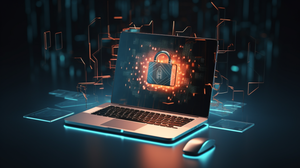In today's digital age, the security of our computers and personal information is of utmost importance. With the increasing prevalence of cyber threats and intrusions, it's crucial to take proactive measures to deter potential attackers. By implementing a combination of physical security, encryption, and technical controls, users can significantly enhance the protection of their computer systems. In this article, we will explore some effective strategies that can help you keep intruders at bay and safeguard your digital assets.
Physical Security Measures
One of the foundational steps in securing your computer is to ensure its physical protection. By limiting physical access to your device, you reduce the risk of unauthorized individuals gaining control over it. Here are some key physical security measures:
- Keep your computer in a secure location. Store your computer in a locked room or cabinet, particularly when you're away or not using it. This prevents opportunistic thieves from easily accessing your system.
- Utilize cable locks. Consider using cable locks to tether your computer to a fixed object. This simple yet effective measure adds an additional layer of security, making it more difficult for someone to walk away with your device.
- Be cautious in public places. When using your computer in public spaces, ensure that you're in a secure and well-monitored environment. Avoid leaving your computer unattended, and be mindful of your surroundings to deter potential thieves.
Encryption and Password Protection
Implementing encryption and password protection significantly fortifies your computer's defenses. These measures safeguard your data even if unauthorized individuals manage to gain access to your device. Consider the following steps:
- Full disk encryption. Enable full disk encryption on your computer's operating system. This ensures that all data stored on the device is encrypted and inaccessible without the encryption key, providing an added layer of protection against unauthorized access.
- Strong and unique passwords. Always set strong, complex passwords for your computer and user accounts. Use a combination of uppercase and lowercase letters, numbers, and special characters. Additionally, avoid reusing passwords across multiple accounts to minimize the risk of credential stuffing attacks.
- Two-factor authentication (2FA). Whenever possible, enable two-factor authentication for your online accounts and services. This adds an extra authentication step, typically through a code sent to your mobile device, making it more challenging for intruders to gain unauthorized access.
Technical Controls
Leveraging technical security controls helps bolster your computer's defense mechanisms and detect potential intrusions. Here are some essential technical controls to consider:
- Intrusion detection and prevention systems (IDPS). Deploy an IDPS to monitor network traffic and identify suspicious activity. These systems can detect and prevent various types of attacks, including malware infections, unauthorized access attempts, and data breaches.
- Firewall protection. Enable a robust firewall on your computer to monitor incoming and outgoing network traffic. Firewalls act as a barrier between your device and the internet, preventing unauthorized access and blocking malicious connections.
- Regular software updates. Keep your computer's operating system, applications, and antivirus software up to date. Software updates often contain security patches that address known vulnerabilities, reducing the risk of exploitation by cybercriminals.
Conclusion
Protecting your computer from intruders requires a multi-layered approach. By implementing physical security measures, utilizing encryption and password protection, and leveraging technical controls, you can significantly reduce the risk of unauthorized access and potential data breaches. Stay vigilant, stay informed, and make security a top priority in today's digital landscape.
#blog

